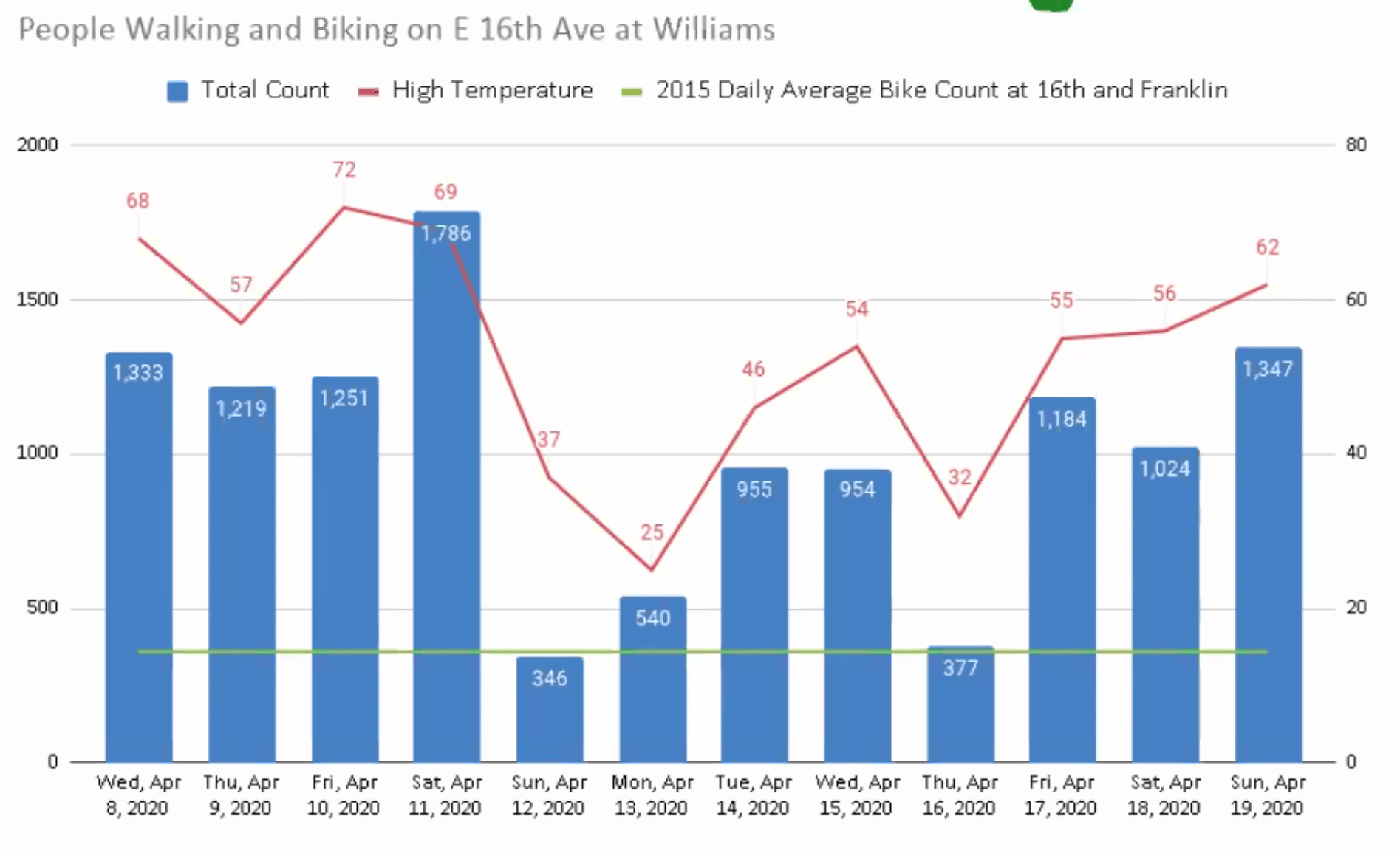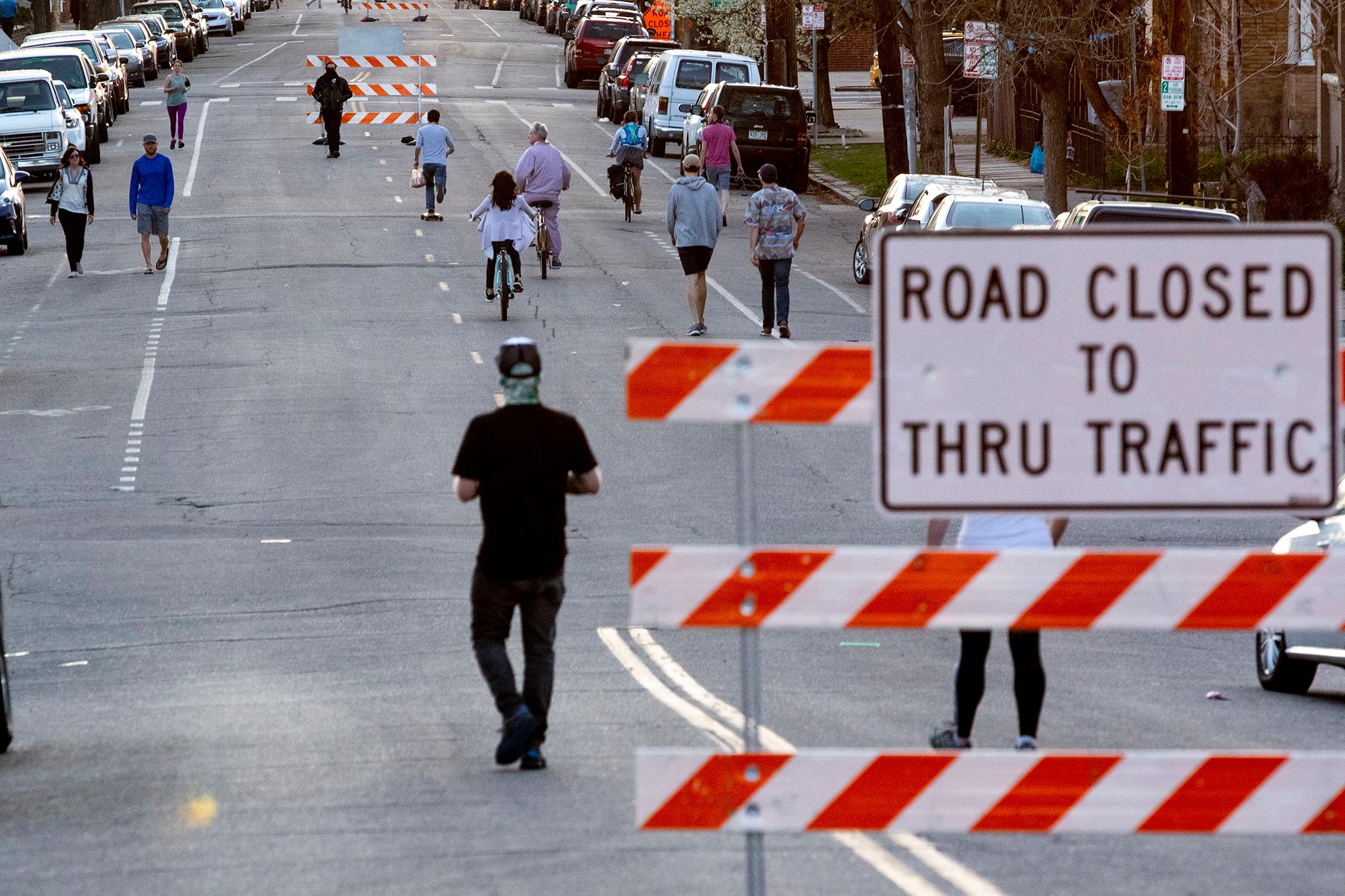Tired: Motorists owning Denver streets. Wired: Sharing the public assets -- even just a little -- with others.
That's how the Denver Streets Partnership, an advocacy group for sustainable transportation modes like walking, biking and public transit, characterizes the city's CVOID-19 experiment. Fueled by overcrowded sidewalks and parks from Denverites escaping cabin fever, the transportation department turned roads around the city into "open streets" (roads closed to cars) and "shared streets" (roads open to everyone, including motorists, but designed for people walking, rolling and biking).
And people are using them. Between April 8 and April 19, an average of 1,026 people daily traveled down the middle of 16th Avenue in North Capitol Hill and City Park West, which is closed to motorists who don't live on the stretch. The Streets Partnership put down a bike and pedestrian counter to get the data.
The 16th Avenue stretch is one of eight segments essentially closed to cars, not including all the interior park roads around the city. Given the data from 16th, it's fair to say tens of thousands of people are sauntering and riding down the middle of Denver's streets, the partnership says.

Advocates say the successful experiment makes the case for the program to expand and stick around long after the stay-at-home order is lifted.
"There's a lot of people who are experiencing their communities in ways they've never been able to before. And we have so much space, more space than we need, dedicated to vehicles," said Danny Katz, head of Colorado Public Interest Research Group, a member of to the Partnership. "This could provide an opportunity for us to see the ways we could be reallocating and sharing that space more equitably with people who are walking and biking and rolling."
Even after stay-at-home orders are lifted or relaxed, Denverites will need to maintain physical distancing -- and mental heath said Molly McKinley, who manages advocacy for Bicycle Colorado.
"As long as we have physical distancing in place, we need more physical space to move around," McKinley said. "I live near the 11th Avenue shared street, and I've been getting out running and biking ... and that has really made me feel connected despite being physically distanced right now."
The Denver Department of Transportation and Infrastructure has no current plans to expand the number of open and shared streets.
DOTI has not identified funding to sustain the deployment of barricades, said Heather Burke, a spokesperson for the department. Denver's government faces possibly unprecedented budget shortfalls.
"However we are continuing to evaluate the need to add areas to the program," Burke said. "We will continue to monitor the streets and align next steps with the city's COVID recovery plan."
DOTI has not decided on whether similar open streets will exist after the pandemic ends, Burke said. But shared streets will. She pointed to the city's "neighborhood bikeways" which prioritize people who aren't in vehicles with design elements like traffic circles and diverters. The city has opened one on 35th Avenue and plans to open a "greenway" on 39th Avenue later this year.
The streets department has closed one block of Bannock Street to cars downtown as well.
The Streets Partnership just launched a survey for anyone who wants to weigh in on what's worked well and what has not.











